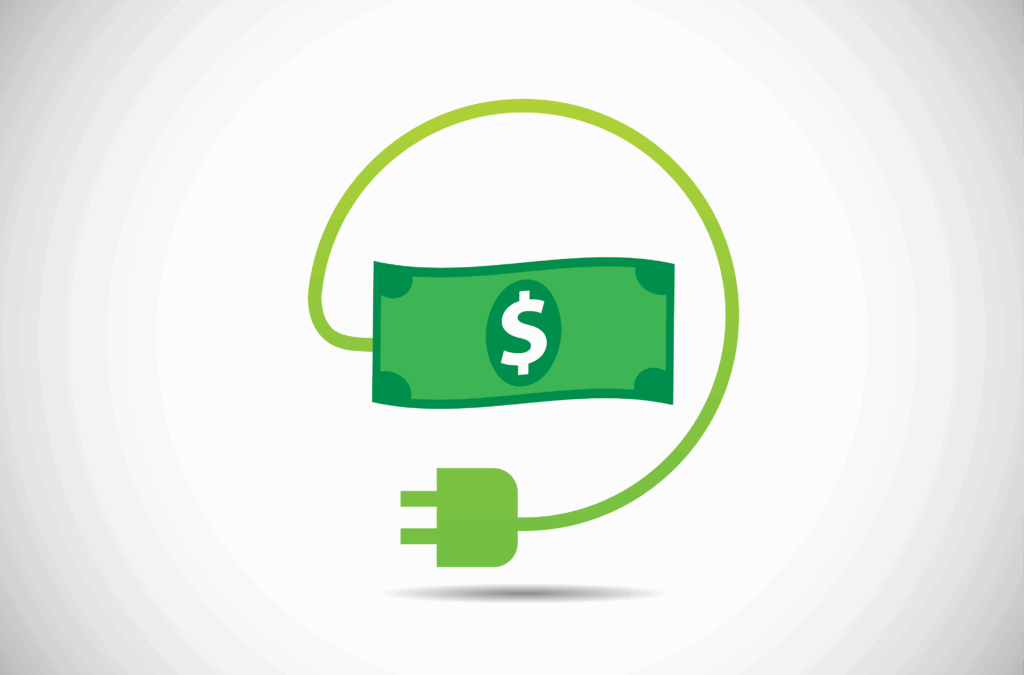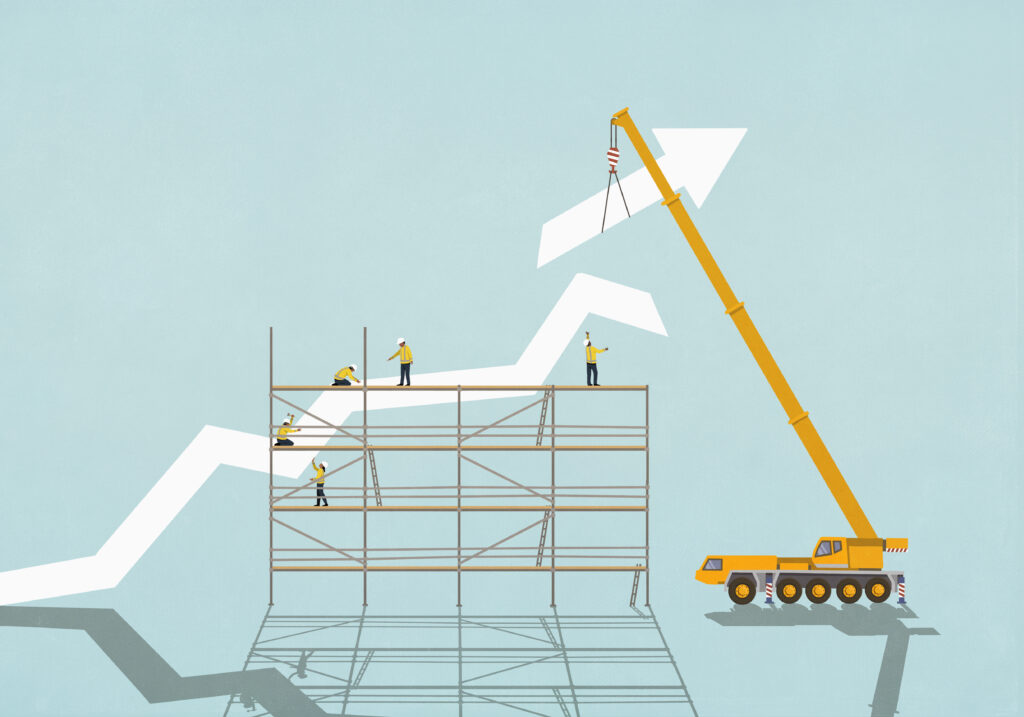
Eyes on Earth

ICEYE’s first satellite launched in 2018 to monitor ice along shipping routes in northern seas, but its growing constellation of radar-based satellites today sees through darkness, clouds, dust, and smoke to provide crucial data for first responders, governments, and insurers as hurricanes storm ashore and wildfires burn.
That data proved its value in recent months for Hurricanes Helene and Milton and the Los Angeles wildfires. The ability to monitor small changes on the ground from 500 miles up in space is opening new possibilities for the Finland-based company in earthquake response, supply chains, utilities, wind power, and other areas.
Stephen Lathrope: We’re all very aware in the industry that the risks related to catastrophic weather events continue to increase; data, including from satellites, is playing a central role [in risk assessment and management], and part of that increased role is driven by the technology. The miniaturization of the satellite hardware, the associated cost reduction for manufacture, and specifically for launch and the ongoing operation of constellations, mean that we can have way more technology orbiting the Earth and we can revisit areas of interest around the globe multiple times a day, driving a huge increase in the frequency of data that we capture and the resolution that we capture it at. Those two factors together mean that, particularly with the sort of radar-based technology that ICEYE uses, we’re able to provide really rich information about events as they unfold. If you can see the detail of the hazard—for instance, flooding extent or depth of water—while the events are developing, and see the specific properties that have been impacted, you can understand which neighborhoods are affected and to what extent. Then, you’ve got a huge range of opportunities to manage the event, reserve more effectively, optimize claims, and support subrogation in areas as well.
Then the extent of information that’s building up as more and more observations are made of these events, that also enables better risk selection and pricing into the future. There’s a huge wealth of data that is being built up from lots of sources, and satellite-based radar imagery is a really important part of that change. That data is put out within 24 hours of the event starting. The unique benefit there is that if you think about something like the Lahaina fire in Hawaii, to be able to get data on that, when you’ve got really high winds, you’ve got potentially smoke it’s really tough to scramble aircraft and get a view of the entire event. So, being able to fly over with the satellites and see through those conditions is extremely important, and being able to get that data out quickly to both first responders on our government solution side, but also for our insurance partners to start to understand what’s happened on the ground and what they might need to do next, are vital.
It’s the same thing with the L.A. fires—even more of a longer-term duration before other imaging techniques could get airborne because of the extremely high winds. Being able to use our sensors to see what was happening was in some cases the only data that emergency responders and insurers were able to leverage for multiple days.
Lathrope: Our investors recognize ICEYE as a leader in the rapidly growing space industry, a leader in small, lower-cost satellites with very sophisticated Earth observation technology. Our specific technology is synthetic aperture radar (SAR) and that has some really powerful features. Beyond the optical imagery of Earth that we’re used to, synthetic aperture radar sees day or night because it’s an active sensor. We send a signal and then we receive a bounce-back from the planet. And that has a huge amount of information in it about the shape of terrain or of objects and locations. We can do that 24/7, through clouds, through dust, through smoke, and that has huge application in defense and intelligence. That’s part of the business that we run here at ICEYE that is valued by our investors. But the thing that’s really unique about ICEYE is the focus that we’ve put, beyond defense and intelligence, on civil government and commercial solutions.
One of the challenges that comes with the satellite imagery is that it’s a very rich data source, meaning it’s quite difficult to handle and analyze, and as such requires a lot of specialist skills. Another challenge is that to really understand natural catastrophe events you often need to combine that radar image with other data. What ICEYE has done that is special, over the last three-and-a-half years or so in particular, is to invest in creating solutions that are tailored to areas of specific business requirements, starting with insurance, actually, but now extending out into banking and utilities as well.
Steven Sanders: The capability of seeing through all of the atmospheric conditions, seeing at night, allows us to do some really important things that no one’s been able to do before, especially relative to natural catastrophes. We can capture things like peak flood levels, for example, and where a hurricane’s making landfall, and we can see what’s happening on the ground while the clouds are still there. The speed and scale which enable us to provide data back to the insurance market is something that’s not been possible prior to this.
We were able to pre-image the coastline prior to Hurricane Helene [striking the Southeast United States in September 2024], to take a snapshot of what everything looked like on the ground, then image again immediately after the impact of the hurricane so we can see what changed. What’s really unique is that we were able to then pre-image again prior to Milton [reaching Florida in October], so we could take into account all that had been damaged with Helene, and then also the cleanup that had started to occur, and then used that as the new baseline for what happened with Milton when it made landfall.
If you combine that change detection data that we can provide with our flood solutions, you can really start to piece together what’s happened on the ground and what the impact is going to be and then what operations an insurance carrier might need to deploy, based on the situation.
Sanders: We can provide real-time building damage assessment during a wildfire. We can fly the satellites over the area, take images, and then look to see where the buildings are located, based on their building footprint data, and then we can determine based on that radar signature that comes back whether that building has been damaged or not.
That data is put out within 24 hours of the event starting. The unique benefit there is that if you think about something like the Lahaina fire in Hawaii, to be able to get data on that, when you’ve got really high winds, you’ve got potentially smoke it’s really tough to scramble aircraft and get a view of the entire event. So, being able to fly over with the satellites and see through those conditions is extremely important, and being able to get that data out quickly to both first responders on our government solution side, but also for our insurance partners to start to understand what’s happened on the ground and what they might need to do next, are vital.
It’s the same thing with the L.A. fires—even more of a longer-term duration before other imaging techniques could get airborne because of the extremely high winds. Being able to use our sensors to see what was happening was in some cases the only data that emergency responders and insurers were able to leverage for multiple days.
Lathrope: Absolutely. We are enabling a lot of innovations in the traditional indemnity insurance space, but we’re definitely well suited as a data provider to support the growth of parametric. We all understand the power of parametric insurance in facilitating a rapid payment related to an event to individuals, businesses, communities impacted is one of the key advantages of that type of product.
We’re very proud to be involved in both commercial and public sector parametric innovation, including arrangements in Ghana and Nigeria. That was initiated by the Insurance Development Forum, which is a really important international vehicle for bringing insurance to various communities around the world. Also, closer to your home, the New York City Flood [parametric insurance] program, a first of its kind providing relief to vulnerable communities around New York City.
Lathrope: We’ve got an increasing number of auto insurance customers and that’s about understanding from a risk selection and pricing perspective where flooding has impacted before and where there are areas of higher or lower risk. Also, where we do some of our rapid impact analysis and our early warning reporting where we basically say, here’s where we think it’s going to flood, and automobiles are fairly mobile assets. But we’re also definitely thinking beyond those lines. So, for example, we have customers using our data to assess impacts on supply chains.
One of the things we’re particularly excited about is our increased focus on utilities and our ability to provide insight into what is happening with energy assets and energy security and also continuity of their performance. We’ve been looking recently at wind turbines. I was surprised to see from some of our recent R&D work that we can observe not only the hundreds of turbines in an overall wind farm on shore or offshore, but we can also actually see the individual turbine blades.
Lathrope: Our constellation is increasing—we’ve got 48 spacecraft launched so far and we expect to launch more than 20 this year and another 20 the year after. The latest generation of spacecraft that we’ve launched has the highest ever resolution. We now have a 25-centimeter resolution at our highest zoom-in, so that is a very high-resolution image, particularly when you’re talking about taking it from space 500 miles away. As the size of the constellation increases, we can do more of what we call persistent monitoring.
We’ve got a long way to go with our existing capability, applying it to new natural catastrophe areas. We’ve also got the potential to use that back catalog of data to support modeling, risk selection, and pricing as well. Then, as the capacity and the resolution continue to increase, we will start to do more persistent monitoring, and that is about the predictive aspect of looking at change and saying, “What do we think might happen next?” Which is what we’re really excited about because, of course, if you can avoid a loss, then that’s even more valuable than mitigating the loss associated with something that has happened.
Solar Catastrophe
When the most powerful recorded solar storm hit Earth in 1859, it disrupted the latest communications technology, the telegraph, while lighting up the night sky as far south as Panama. The impact of another storm similar to the “Carrington Event,” named after astronomer Richard Carrington, would be far more catastrophic in today’s satellite- and electricity-based economy.
A severe geomagnetic storm could cause global economic losses of up to $2.4 trillion over five years, Lloyd’s estimates. The expected loss would be about $17 billion, which is the economic loss multiplied by the probability of the event occurring, the insurance marketplace said in a March risk-scenario analysis. Global economic losses could range from $1.2 trillion to $9.1 trillion, depending on the severity of the event, according to Lloyd’s, which covers nearly a third of all global space risks, including satellite insurance from launch to decommissioning.
A solar storm occurs when the sun ejects masses of particles, energy, magnetic fields, and material into the solar system. If it hits Earth, it can result in a severe geomagnetic storm that damages satellite electronics and heats up the atmosphere enough to increase drag and destabilize satellite orbits. On the ground, a geomagnetic storm can damage electrical transformers and relays, causing power outages (though the auroras are spectacular).
A storm powerful enough to disrupt electrical grids, communications, satellite navigation, and computing systems would also cause widespread business interruption losses. North America would be hardest hit in the Lloyd’s $2.4 trillion scenario, with a potential economic loss of $755 billion over the half-decade period, followed by Europe with a $697 billion loss.
The U.S. National Oceanic and Atmospheric Administration estimates that storms as powerful as the Carrington Event only occur about once every 500 years, but smaller events are more frequent. In 2022, a geomagnetic storm hit a day after SpaceX launched 49 satellites, knocking 40 of the satellites out of orbit.
Space is playing a rapidly growing role in the global economy. The global satellite data services market is forecast to rise to $45 billion by 2030 from $6 billion in 2020, PricewaterhouseCoopers forecast in 2024. As of March 17 of this year, more than 11,000 active satellites were orbiting Earth, according to Harvard-Smithsonian astrophysicist Jonathan McDowell.




